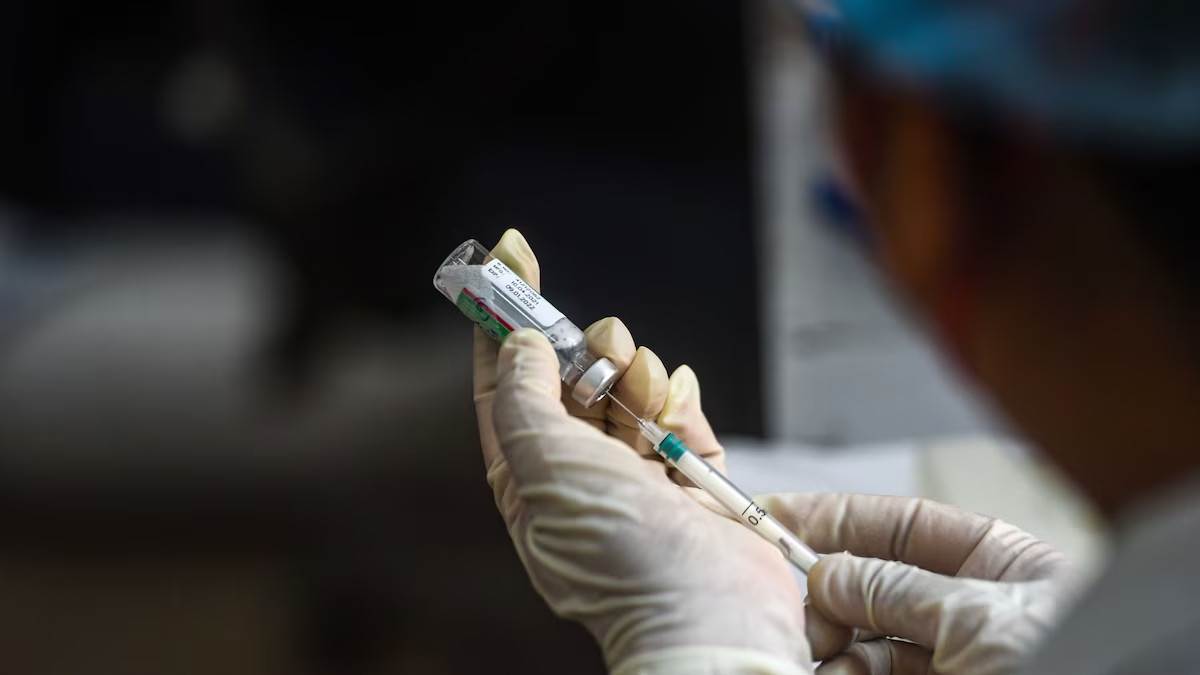You are here
A small Indian village cited as an example of how to encourage vaccinations
Primary tabs
 How a village in India reached 100% vaccination in the face of misinformation and hesitancy The techniques used in the village of Janefal could now be a model for regions around the world that are struggling with low vaccination rates. Science
How a village in India reached 100% vaccination in the face of misinformation and hesitancy The techniques used in the village of Janefal could now be a model for regions around the world that are struggling with low vaccination rates. Science When health workers tried to convince Munir Pathan to take the COVID-19 vaccine in February, the 52-year-old farmer refused. The jab would kill him, he was certain. A resident of Janefal village in the western Indian state of Maharashtra, roughly a 228-mile drive from Mumbai, Pathan had read messages on WhatsApp, stating that vaccine shots are lethal and that if a doctor errs while administering the shot, it leads to an infection in the arm. The only way to save the person thereafter is by amputating the limb.
“My mother is 80 years old, while my father is a decade older. I was particularly scared to get them vaccinated,” Pathan says. “Also, there hasn’t been one COVID-19 case in our village since the beginning of the pandemic last year. Therefore, we did not want the risk of vaccines. It was only after our village head took the shot and survived that I started developing faith in vaccines.”
On April 27, over three months after the vaccination drive first commenced in India, Pathan took his first shot at a vaccination camp organized in his village. That day, health workers managed to inoculate 65 residents of Janefal, or 100 percent of its eligible population, setting an example for other rural residents of the country, and prompting vaccination drives in 16 nearby villages.
Janefal stands out as a role model, says Sunil Chavan, collector of the Aurangabad district, where this small village is based. Chavan, who heads the administrative affairs of the district with 4.5 million people, lauded the initiative of local leaders and health workers in Janefal, stating that they started creating awareness when the vaccine rollout was only beginning in India, marred by staunch resistance in its rural pockets. “Now, every village wants to be Janefal,” says Chavan. ...
In addition to vaccine hesitancy, COVID-19 inoculation in India’s countryside is hindered by many other challenges. These include online registrations for rural residents, who have limited digital literacy and smart phone accessibility, organizing villagers for vaccination at local healthcare centres, which are often locatedmiles away, and arranging enough shots in a country, which is already reeling from an acute vaccine shortage. It took Janefal three months of vaccine advocacy, faith building, and community mobilization before it achieved the milestone of 100 percent vaccination of its eligible population.
Sarla Zalte, who has been serving as a health worker in the village for nearly three decades, says that she has made dozens of home-to-home visits since January, trying to persuade villagers into getting inoculated. She says she would reason with residents, comparing the COVID-19 vaccine with the Bacille Calmette-Guerin and Hepatitis B jabs for newborns, insisting that like these immunization shots, the only purpose of COVID-19 vaccines was to build immunity against the novel disease. ...
Although infrastructure and the shortage of vaccines remain rife, Janefal’s model must be adapted in other villages of the country, says Reddy of PHFI. “[It] shows local leadership, local community spirit of support,” says Reddy. “You cannot do vaccination or any major health program with a top-down approach,” he added. ...



Recent Comments